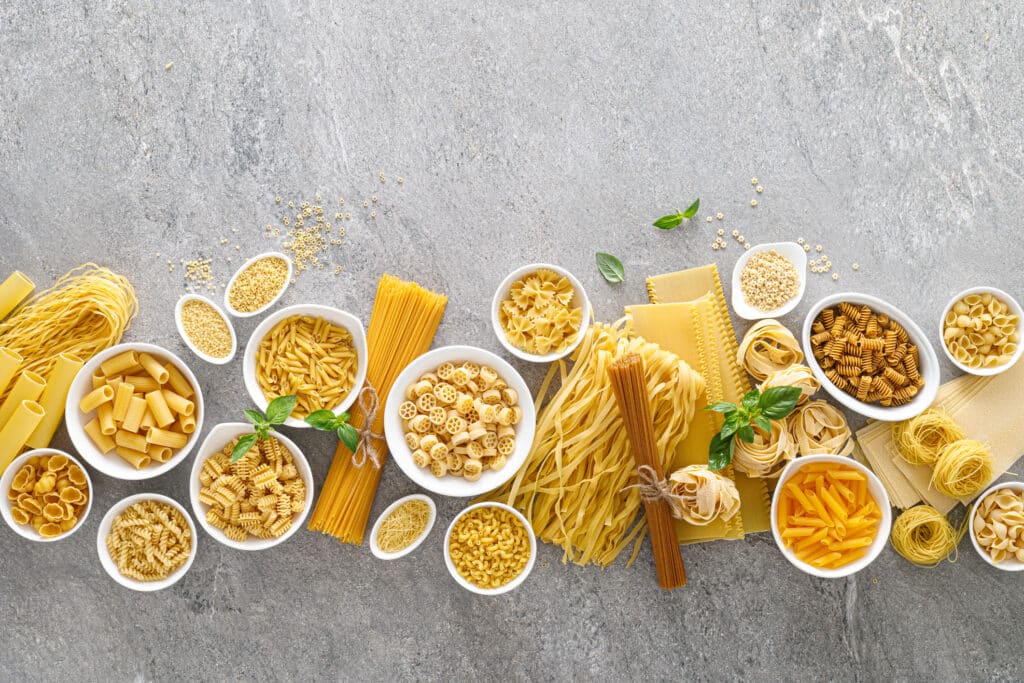Enjoying pasta while managing type 2 diabetes requires a thoughtful and balanced approach to effectively control blood sugar levels. Toby Smithson, MS, RDN, CDCES, shares her insights on mindful choices, portion sizes, and diabetes-friendly ingredients to create delicious pasta dishes without compromising overall health.
What are the healthiest pasta options for type 2 diabetes, and why are they beneficial?
All types of pasta can fit into a healthy meal plan for someone with diabetes. Whole grain pasta is a great option because it offers more fiber, which can help lessen blood sugar spikes. Enriched pasta is high in B-vitamins (thiamin, niacin, riboflavin) and iron – plus it contains dietary fiber. And, since many people with diabetes tend to have low amounts of B vitamins due to increased urination from elevated blood sugar, enjoying a combination of half whole grain and half enriched pasta is another great option to consider.
Whichever pasta is chosen, it is important to monitor portion size. One-third cup of cooked pasta is 15 grams of carbohydrate, but that doesn’t mean that’s all that can be eaten in one meal. Typically, diabetics are allotted 30-60 grams of carb per meal.
What are the best ingredients to use in a pasta dish if you have type 2 diabetes?
Adding vegetables to pasta dishes can increase the volume of food, add more vitamins and minerals, and keep the total grams of carbohydrate lower for the meal. It makes a simple dish more nutrient-dense and more filling, while also providing additional dietary fiber.
Does adding a lean protein source to a pasta dish benefit someone with type 2 diabetes?
It’s helpful to combine pasta with a lean protein such as grilled chicken, ground turkey, lower-fat cheese, or vegan meatballs. Lean proteins can help slow down the absorption of carbohydrates in the body and help lessen blood sugar spikes.
What are the healthiest pasta sauce options for people with type 2 diabetes and why?
Using olive oil and garlic is the best choice for a low-carb, heart-healthy pasta sauce. If tomato-based pasta sauce is preferred, the nutrition facts label is the best guide for a balanced pick. On the nutrition facts label, look at three areas: serving size, total grams of carbohydrate, and grams of sodium.
Picking the best choice of pasta and sauces comes down to balancing out the total grams of carbohydrate at the meal. If more pasta is desired, choose a low carb sauce and a lean protein food to help slow down the absorption of carbohydrates.
About the Author
Toby Smithson, MS, RDN, CDCES is a registered dietitian nutritionist (RDN) and certified diabetes care and education specialist (CDCES) who has successfully managed her own diabetes for more than 50 years. Toby really knows what effectively managing diabetes means for your health and to your normal life, and her combination of professional knowledge and personal experience can help both diabetics and non-diabetics make small decisions that can make big differences in their future health.

